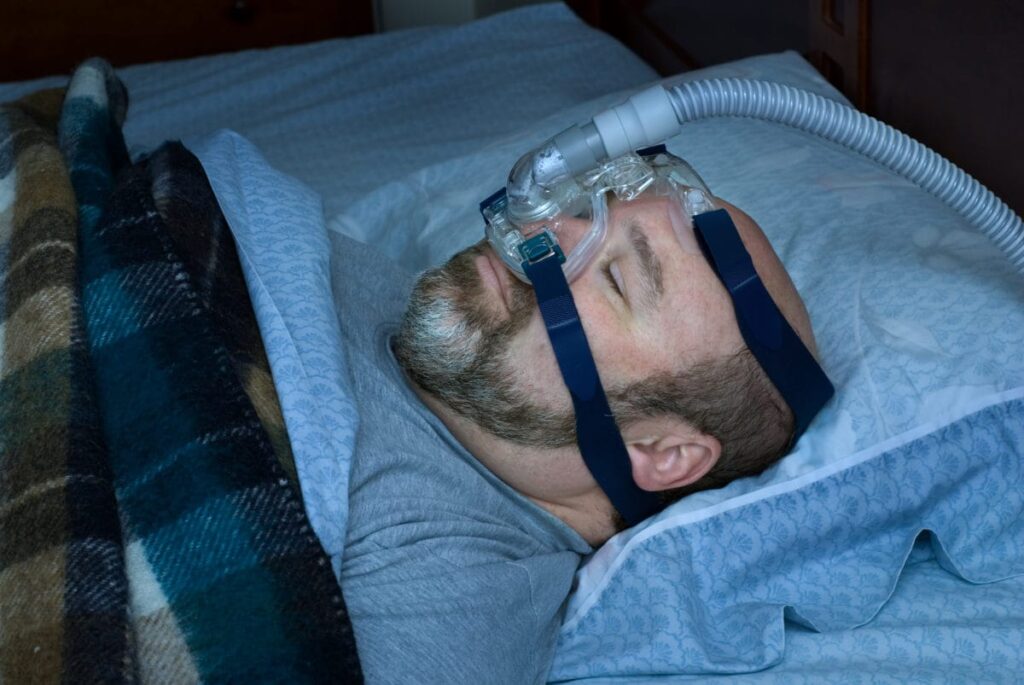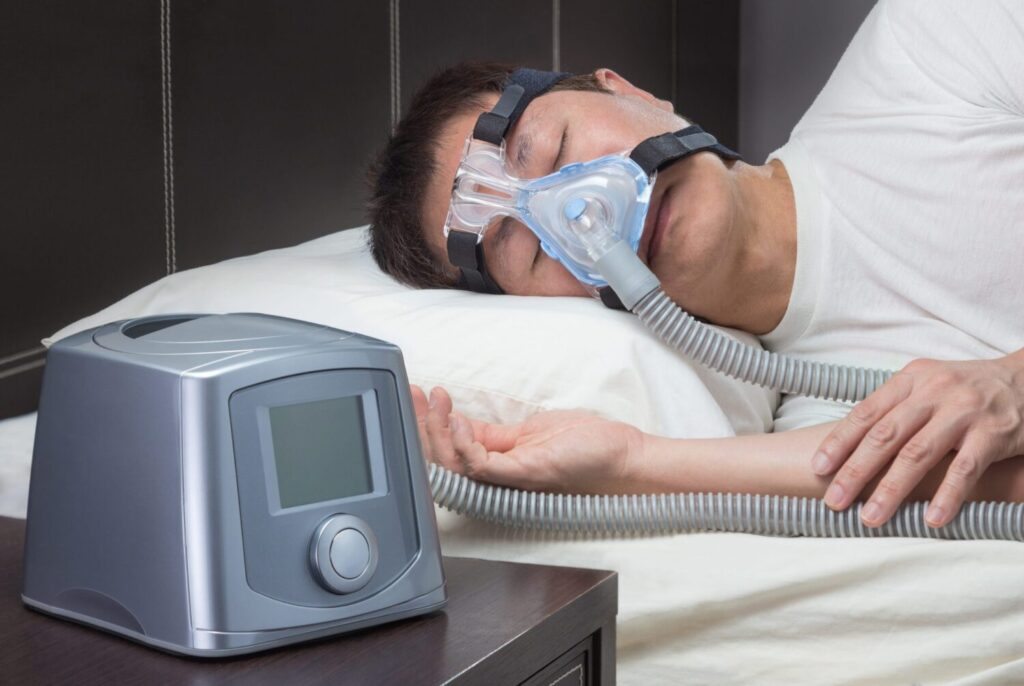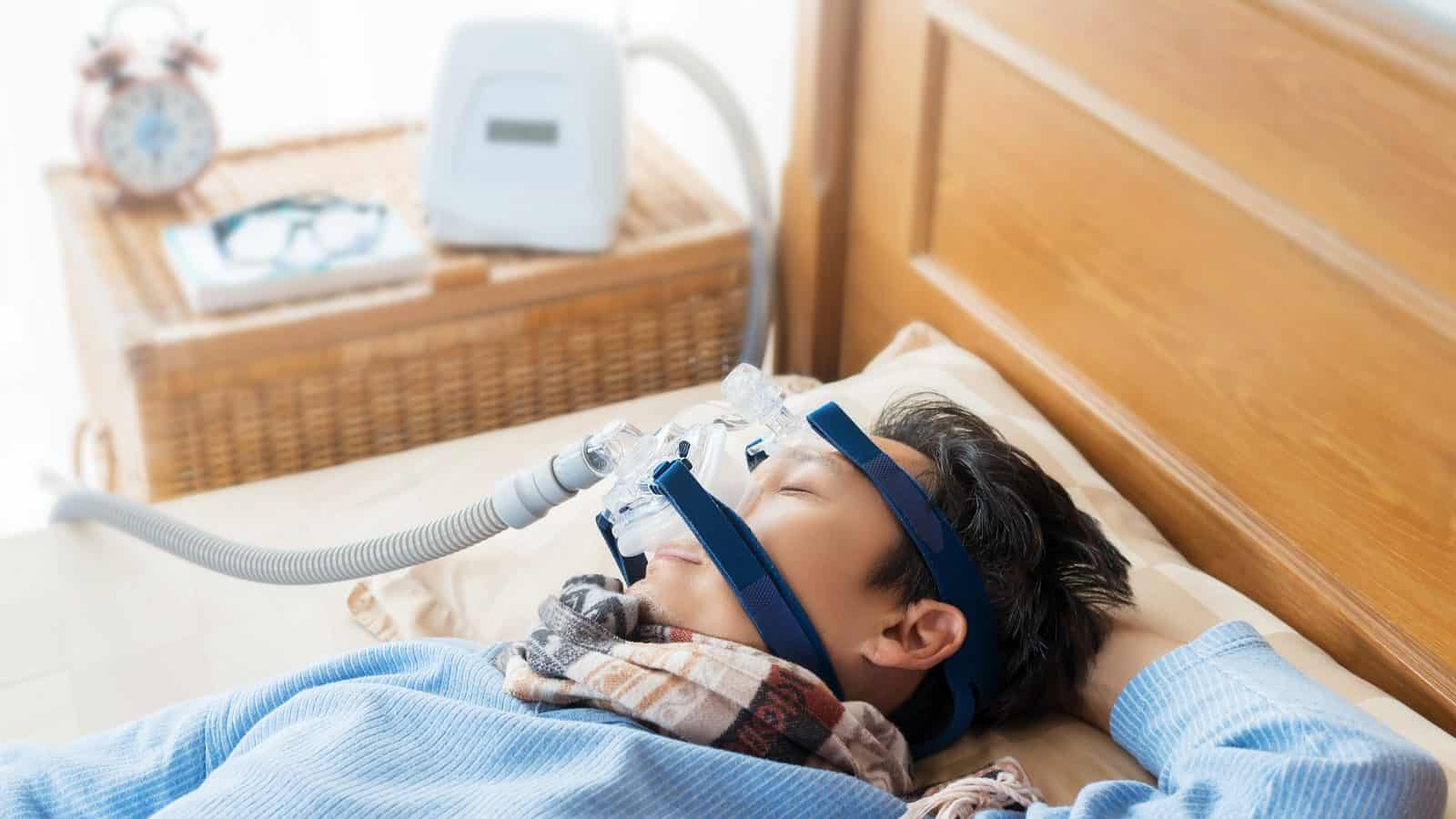The most effective therapy for obstructive sleep apnea is continuous positive airway pressure (CPAP). A hose carries pressured air from the CPAP machine to a mask, where it enters the patient’s nose and physically props open the airway so that oxygen may reach the lungs.
A mouth breather is someone who typically breathes through their mouth rather than their nose to inhale and exhale. The air from CPAP masks entering the nose will escape out of the patient’s mouth while they sleep with their lips open. This issue results in the CPAP masks pressure entering the airway being lower than what is necessary to maintain the airway open, which lowers the effectiveness of the CPAP masks treatment.
Heated humidification
The use of heated humidification is often the sleep doctor’s first line of defense for treating mouth breathing and dry mouth. The installation of specially made humidifiers like this one into a CPAP machine is simple.
The study of humidification has a long history. In a 1995 research, Hayes discovered that using nasal CPAP with an open mouth increases nasal mucosal blood flow, which results in congestion. Hayes discovered that humidifying the air entering the nasal CPAP might stop this increased mucosal blood flow.
According to a 1999 Massie research, heated humidification improves CPAP masks compliance by decreasing upper airway symptoms’ adverse effects and making patients feel more rested when they awaken after using CPAP masks with heated humidification. Massie noted that if patients begin warm humidification at the beginning of CPAP, compliance increases may be obtained sooner.
In a 2000 study, Araujo discovered that full-face masks completely eliminate air dryness during CPAP, and heated humidification greatly reduces it even during mouth leaks.
Full-face CPAP masks
Because mouth breathing causes air to escape from the compressed airway tract, full-face CPAP masks were created as a solution. A full face mask has a triangular shape and covers the lips and nose. In this manner, the airway will remain open whether it comes in via the mouth or nose. Using a full face mask will completely prevent mouth dryness, as was mentioned above in the Araujo research.
Full face CPAP masks are effective at allowing mouth breathing, but since more of the mask’s surface comes in contact with the skin, they may be cumbersome and prone to leaks. The mouth is still free to open when sleeping, but most people prefer nasal masks that cover just the nose. To prevent mouth breathing while using a nasal mask, chinstraps are employed.
Chin slings
Chin bands are another common remedy for mouth breathing when using CPAP masks. The chin straps are constructed of elastic material with Velcro fasteners. The purpose of chin straps is to keep the lips shut. Chin straps fasten at the top of the head and go under the chin.
Although they might be useful, the best ones are pricey. They may be painful, and some of them have a propensity to cut across the ear, irritating or encroaching on delicate tissue, which causes problems.
Given that chin straps are constructed of elastic material, they often need to be severely tightened in order to keep the lips shut when sleeping. The chin is dragged posteriorly more when greater force is required to seal the lips. As a consequence of the jaw being forced closer to the neck, there is a greater chance that the airway may get constricted due to the retreating chin. Non-stretchable chin straps could be more successful in maintaining the mouth closed in its normal posture.

The chin-up strips
It might be difficult to keep your mouth shut at times! Knowing that chin straps don’t work on many individuals, some innovators created a U-shaped sticky tape strip that they say prevents mouth opening. I gave it a try, and although it worked rather well, air was still able to escape my mouth’s sides. To get the strip to fully close my mouth, I had to pull the skin of my face together firmly. The item was quite uncomfortable on my face, but it did function at that time.
Taping the mouth
A guaranteed approach to stop mouth breathing is to tape your mouth shut by running a piece of medical paper tape horizontally over your lips and beyond the corners of your mouth. Sounds strange, huh? Yes, I do concur, however it’s a really good option for mouth breathing. You will sleep considerably better and prevent medical issues related to mouth breathing with the right kind of medical paper tape. It is also painless.
Issues in Other Domains?
Dealing with mouth breathing sounds difficult, am I right? Why bother treating your mouth breathing if your CPAP is improving your overall health regardless of whether you mouth breathe?
Mouth Breathing: Its Causes and Effects
There are several causes of mouth breathing, often known as xerostomia. Nasal congestion, a cold, sinus/allergies, and other problems brought on by the environment will pass quickly. It is preferable to address chronic mouth breathing so that nasal breathing can occur, which is caused by a deviated septum or facial bone structures.
Utilizing the Nose to Breathe
Using the nose to breathe is normal. Getting oxygen into our bodies is essential for life. Air comes into the nose, where it is warmed, made more humid, and cleansed before entering the lungs. In addition to helping us feel more rested when we wake up, nose breathing lowers blood pressure, lowers the risk of heart disease, lessens anxiety and depression, enhances concentration and memory, lessens attention deficit and hyperactivity, eases headaches, migraines, back pain, sciatica, and neuralgia, improves weight loss and digestion, boosts immunity and resistance to the common cold, and makes us perform athletically better than when mouth breathing.

Mouth breathing
As was already mentioned, mouth breathing lessens the benefits of CPAP masks therapy. Mouth breathing also contributes to a number of dental and medical issues.
Particularly in children, mouth breathing has a strong link to atopic dermatitis, malocclusion of the teeth, reduced chewing activity during meals, susceptibility to gum disease, speech difficulties, abnormal facial growth and development, longer and more difficult braces treatment, and tongue-tie phenomena.
Mouth breathing often results in dry mouth, which implies there isn’t any saliva in the mouth, in both kids and adults. Saliva protection for the teeth helps them fend against cavities. The mouth’s pH falls to an acidic level when it is dry from mouth breathing. A lower pH and less saliva both increase the chance of getting cavities. Additionally, mouth breathing might result in poor breath.
When you breathe through your nose, 25% of the body’s nitric oxide is produced by your sinuses. Nitric oxide boosts memory and learning, destroys bacteria, viruses, and other germs, controls blood pressure, lessens inflammation, and strengthens the immune system. It also increases the lungs’ capacity to absorb oxygen. Many of the beneficial effects of nitric oxide that come from mouth breathing are lost.
The two quarts of mucus the body produces each day are expelled by nose breathing. If you breathe via your mouth, this mucus will not be expelled, stagnating and resulting in infections, ear infections, and sinusitis.
Taste and smell go along in hand. If you mouth breathe, this connection is broken, which might affect your hunger and satiety levels and cause you to eat more than you should in an effort to satisfy your taste buds.
Additionally, your nose and heart share crucial neural system connections. Mouth breathing may increase stress levels, blood pressure, and heart rate.

